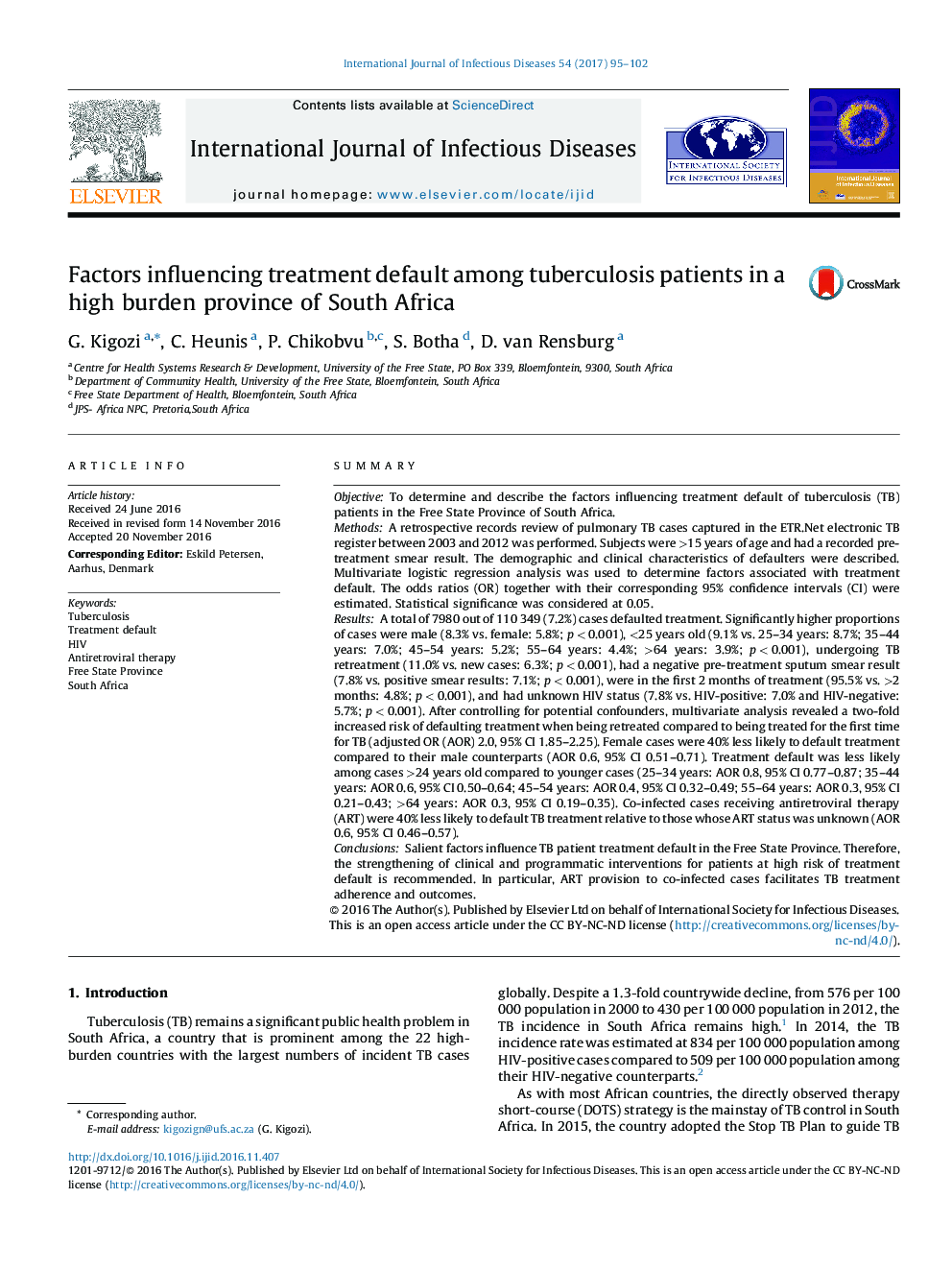| Article ID | Journal | Published Year | Pages | File Type |
|---|---|---|---|---|
| 5667245 | International Journal of Infectious Diseases | 2017 | 8 Pages |
SummaryObjectiveTo determine and describe the factors influencing treatment default of tuberculosis (TB) patients in the Free State Province of South Africa.MethodsA retrospective records review of pulmonary TB cases captured in the ETR.Net electronic TB register between 2003 and 2012 was performed. Subjects were >15 years of age and had a recorded pre-treatment smear result. The demographic and clinical characteristics of defaulters were described. Multivariate logistic regression analysis was used to determine factors associated with treatment default. The odds ratios (OR) together with their corresponding 95% confidence intervals (CI) were estimated. Statistical significance was considered at 0.05.ResultsA total of 7980 out of 110 349 (7.2%) cases defaulted treatment. Significantly higher proportions of cases were male (8.3% vs. female: 5.8%; p < 0.001), <25 years old (9.1% vs. 25-34 years: 8.7%; 35-44 years: 7.0%; 45-54 years: 5.2%; 55-64 years: 4.4%; >64 years: 3.9%; p < 0.001), undergoing TB retreatment (11.0% vs. new cases: 6.3%; p < 0.001), had a negative pre-treatment sputum smear result (7.8% vs. positive smear results: 7.1%; p < 0.001), were in the first 2 months of treatment (95.5% vs. >2 months: 4.8%; p < 0.001), and had unknown HIV status (7.8% vs. HIV-positive: 7.0% and HIV-negative: 5.7%; p < 0.001). After controlling for potential confounders, multivariate analysis revealed a two-fold increased risk of defaulting treatment when being retreated compared to being treated for the first time for TB (adjusted OR (AOR) 2.0, 95% CI 1.85-2.25). Female cases were 40% less likely to default treatment compared to their male counterparts (AOR 0.6, 95% CI 0.51-0.71). Treatment default was less likely among cases >24 years old compared to younger cases (25-34 years: AOR 0.8, 95% CI 0.77-0.87; 35-44 years: AOR 0.6, 95% CI 0.50-0.64; 45-54 years: AOR 0.4, 95% CI 0.32-0.49; 55-64 years: AOR 0.3, 95% CI 0.21-0.43; >64 years: AOR 0.3, 95% CI 0.19-0.35). Co-infected cases receiving antiretroviral therapy (ART) were 40% less likely to default TB treatment relative to those whose ART status was unknown (AOR 0.6, 95% CI 0.46-0.57).ConclusionsSalient factors influence TB patient treatment default in the Free State Province. Therefore, the strengthening of clinical and programmatic interventions for patients at high risk of treatment default is recommended. In particular, ART provision to co-infected cases facilitates TB treatment adherence and outcomes.
